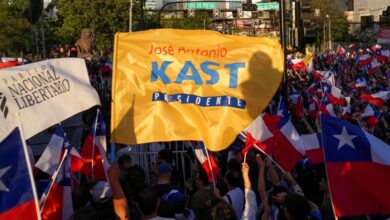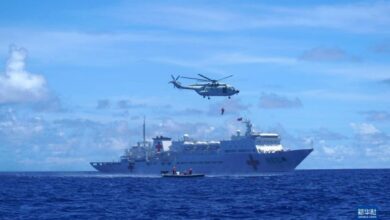Mike Pompeo: Is a military intervention approaching?
Listen this article
In the middle of his arrival at the Venezuelan border, the Secretary of State of the United States made strong statements. Is the end of Maduro near?

As part of his South American tour, the Secretary of State of the United States, Mike Pompeo visited the Colombian city Cúcuta to observe more closely the situation that is lived on the border. According to CNN, Pompeo visited Cúcuta upon his arrival and toured the temporary attention centers for the migrant and the Simón Bolívar international bridge (which connects the two countries and which has been closed since February 22), among others.
The Secretary then gave a press conference in which he expressed his concern about the situation of the Venezuelans, affirming that "I managed to see the pain of the Venezuelans who were there." In addition, to reiterate the importance of opening the borders, Pompeo said "Mr. Maduro, open these bridges, open these borders, you can finish this today. I hope you care. I hope you care enough when you see the horror, the tragedy to change the methods."
Pompeo's strong declarations
In addition to the foregoing, the Secretary of State ratified once again the intentions of the US government to intervene in a prompt solution to the social, economic, and political conflict in Venezuela. In this way, and in an interview with EFE, Pompeo affirmed that "the end of the Maduro regime is getting closer (…) every minute, every hour, is another step to get closer to the exit of Maduro".
In that same line, he blamed Russia and Cuba for being the culprits of Maduro remaining in power and said that while the Chavistas "behave well, those who are on the right side of history, on the right side of freedom”, may have the help of the United States Government.
Also read: Russia and its strategy with Venezuela
In Cucuta, I saw the assistance being provided by the Colombian Government, NGOs & U.S. partners to Venezuelans fleeing the man-made disaster while dreaming of a more prosperous, free, & stable #Venezuela. A complete return to democracy is the only way forward. #EstamosUnidosVE pic.twitter.com/eb550JRRbq
— Secretary Pompeo (@SecPompeo) 15 de abril de 2019
Is a military intervention approaching?
The Government of Donald Trump has not ruled out the possibility of carrying out a military intervention to counteract the seriousness of the crisis. Taking into account the military support that has come in recent days from Russia, the intervention would be the perfect strategy to end the last traces of socialism and give a strong blow to the enemy of all life, Russia.
Both governments do not take into account the disastrous consequences of an intervention, which would only leave more dead people than safe. Nor do they take into account the emergence and growth of groups outside the Colombian law that saw in the crisis an opportunity to be reborn and return to the ideals in which they believed. With them controlling part of southern Venezuela, the United States would not have it so easy, because they do not see them as opponents.
LatinAmerican Post | Laura Guevara
Translated from "Mike Pompeo: ¿Se acerca una intervención militar?





